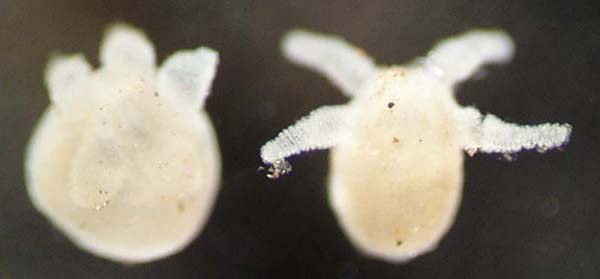
THE XERCES SOCIETY FOR INVERTEBRATE CONSERVATION Aquatic Invertebrates in Pacific Northwest Freshwater Wetlands |
| Identify taxa |
Cnidaria (Hydroids) |
Hydra are relatively common in wetlands. They are one of those groups that blur the boundaries between plant and animal. If not for their tentacles, they would simply look like bits of soft, white tissue. For the most part, they are sessile organisms found in the shallows of all types of water bodies. They can move very slowly at their base or detach and drift if necessary. The name Cnidaria carries the meaning "stinging nettle", and these little creatures are poisonous predators that sting and eat just about anything that fits in the space between their tentacles. Some may grow to almost an inch long, but are likely to shrink when preserved in alcohol. Larger individuals may be able to stun and eat tiny fish. Like their marine relatives, they have small stingers called nematocysts in their tentacles that are sensitive to touch and help subdue prey. Unlike some of their marine relatives, freshwater hydra can't harm humans. Freshwater hydroids reproduce partly by budding. For counting purposes in samples, only mark individual polyps that have well-formed tentacles (indicating that they could have been living on their own). A stalk with several buds still attached should be counted as a single organism. |
Size: small Identifying feature(s): small soft, round body with several soft tentacles Habitat: wetlands; shallows of streams, lakes and rivers Tolerance to pollutants: tolerant |
 |
|
© 2007 Xerces Society
Contact info@xerces.org

